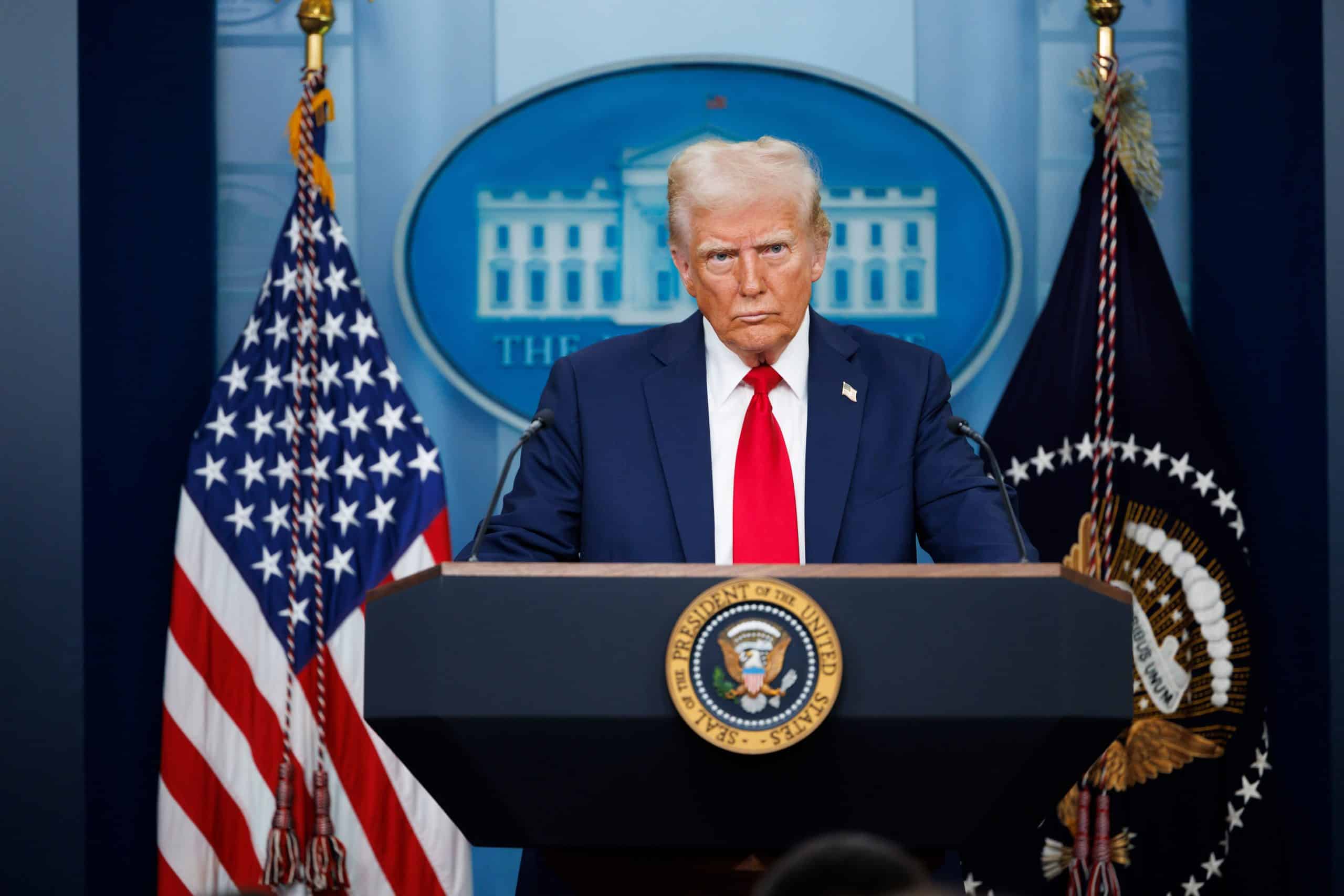As India emerges as the top supplier of smartphones to the United States, President Donald Trump announced plans to “substantially raise tariffs on India” in response to its continued imports of Russian oil. While the move is framed as a geopolitical stance against Russia, it could severely disrupt U.S. tech supply chains and consumer markets, potentially harming American interests as much as Indian ones. This decision lays bare the tension between global strategic objectives and the practical realities of international trade in a multipolar world.
India Overtakes China in U.S. Smartphone Supply Chain
In Q2 2025, India accounted for 44% of U.S. smartphone imports, leapfrogging China (30%) and Vietnam (25%). Just one year prior, India held a mere 13% share. This rapid rise reflects a concerted effort by global tech giants like Apple and Samsung to shift manufacturing away from China. Geopolitical uncertainties, lower production costs, and India’s aggressive investment in electronics infrastructure helped position the country as a pivotal alternative in the post-COVID supply chain reconfiguration.
Trump’s Announcement: Tariffs as a Political Lever
In a statement posted on his social media platform, President Trump criticized India for buying and reselling large volumes of Russian oil, claiming such activity undermines efforts to isolate the Kremlin. As retaliation, he pledged to raise tariffs significantly on Indian goods exported to the U.S. This is not the first time Trump has used tariffs as a political tool, but unlike past trade wars, this action targets a key emerging ally rather than a strategic rival.
The Blow to India: Manufacturing Momentum at Risk
A steep tariff hike could jeopardize India’s booming electronics manufacturing sector, which now contributes over 7% to its GDP. Many production hubs in India have been tailored specifically to meet U.S. market demand. Should tariffs erode India’s cost advantage, tech companies may redirect orders to Vietnam, Indonesia, or even back to Mexico. Worse, it could stall or reverse foreign direct investment inflows, damaging India’s reputation as a stable manufacturing partner in a fragile geopolitical era.
U.S. Exposure: Higher Prices, Supply Shocks, and Business Disruption
The impact will not be one-sided. With nearly half of U.S. smartphones now manufactured in India, new tariffs could result in immediate price increases for American consumers. Devices such as iPhones, budget Android models, and accessories are likely to become more expensive. Additionally, U.S. firms that rely on Indian-made components—ranging from batteries to chargers—could face supply bottlenecks and margin pressure. The broader message is clear: tariffs on India won’t just punish New Delhi—they’ll ricochet into every American retail aisle.
Strategic Backfire: Undermining “China+1” Policy
The move puts Washington in a contradictory position. On one hand, the administration aims to punish countries maintaining economic ties with Russia. On the other hand, it relies on India to help diversify away from China through the so-called “China+1” strategy. If pushed too far, New Delhi may recalibrate its geopolitical posture—deepening trade ties with Beijing or Moscow. The risk isn’t just losing a supplier, but weakening a democratic counterbalance in the Indo-Pacific.
What’s Next? India’s Response and U.S. Business Concerns
India has yet to issue an official response, but analysts expect the government to deploy internal subsidies and export incentives to cushion its industries. Meanwhile, pressure is mounting inside the U.S. Congress—particularly from pro-business lawmakers—to walk back or soften the proposed tariffs. Tech firms and consumer brands are also expected to lobby for exemptions, fearing profit erosion and reputational damage if supply chains are interrupted ahead of the holiday retail season.
Trade Tensions in a New Era
Trump’s move signals a growing willingness to weaponize trade tools for geopolitical objectives. While morally framed as a stand against Russian aggression, the economic blowback is poised to be significant. India’s rise in the global tech supply chain is not easily replaceable, and punishing it could undermine years of U.S. efforts to reduce reliance on China. As always in trade wars, the true cost is borne by businesses and consumers caught in the crossfire.
Comparison, examination, and analysis between investment houses
Leave your details, and an expert from our team will get back to you as soon as possible
* This article, in whole or in part, does not contain any promise of investment returns, nor does it constitute professional advice to make investments in any particular field.
To read more about the full disclaimer, click here- Lior mor
- •
- 7 Min Read
- •
- ago 27 minutes
 Strategic Urban Aviation Move: Joby Stock Jumps 17% After Acquiring Blade’s U.S. Passenger Business
Strategic Urban Aviation Move: Joby Stock Jumps 17% After Acquiring Blade’s U.S. Passenger Business
Joby Aviation ($JOBY) has announced the acquisition of Blade Air Mobility’s ($BLDE) U.S. passenger business in a deal valued at
- ago 27 minutes
- •
- 7 Min Read
Joby Aviation ($JOBY) has announced the acquisition of Blade Air Mobility’s ($BLDE) U.S. passenger business in a deal valued at
- sagi habasov
- •
- 9 Min Read
- •
- ago 2 hours
 Trump vs. the Fed: Institutional Overhaul or Political Overreach?
Trump vs. the Fed: Institutional Overhaul or Political Overreach?
In recent weeks, President Donald Trump has escalated his attacks on the Federal Reserve, signaling his intent to replace Chair
- ago 2 hours
- •
- 9 Min Read
In recent weeks, President Donald Trump has escalated his attacks on the Federal Reserve, signaling his intent to replace Chair
- orshu
- •
- 6 Min Read
- •
- ago 4 hours
 Asian Markets Rise on Tuesday: Hong Kong and South Korea Lead, Japan Declines
Asian Markets Rise on Tuesday: Hong Kong and South Korea Lead, Japan Declines
Regional stock indices open higher as investor sentiment improves Asian stock markets opened mostly higher on Tuesday, August 5, 2025,
- ago 4 hours
- •
- 6 Min Read
Regional stock indices open higher as investor sentiment improves Asian stock markets opened mostly higher on Tuesday, August 5, 2025,
- orshu
- •
- 7 Min Read
- •
- ago 7 hours
 Navigating a Strong Close: The Americas Market Rally on August 4, 2025
Navigating a Strong Close: The Americas Market Rally on August 4, 2025
The trading session across the Americas ended with a robust performance on [Date], as major indices posted significant gains. While
- ago 7 hours
- •
- 7 Min Read
The trading session across the Americas ended with a robust performance on [Date], as major indices posted significant gains. While












